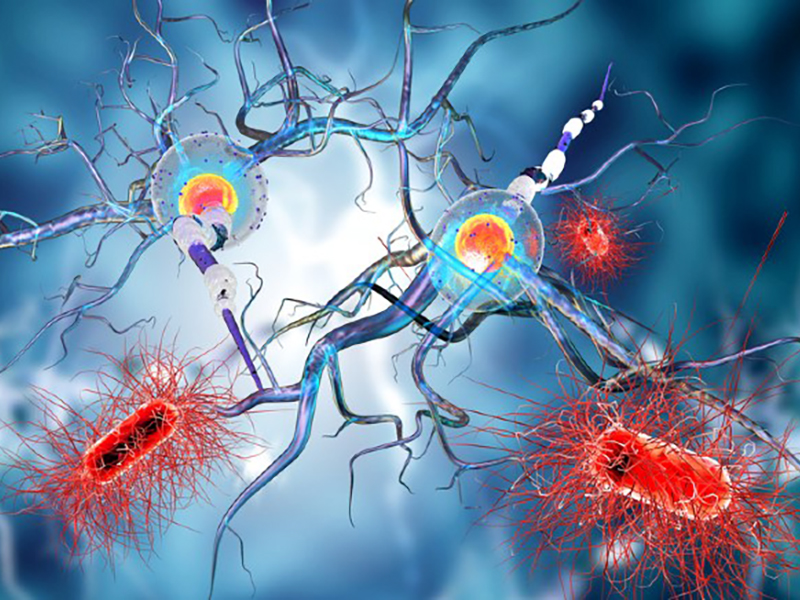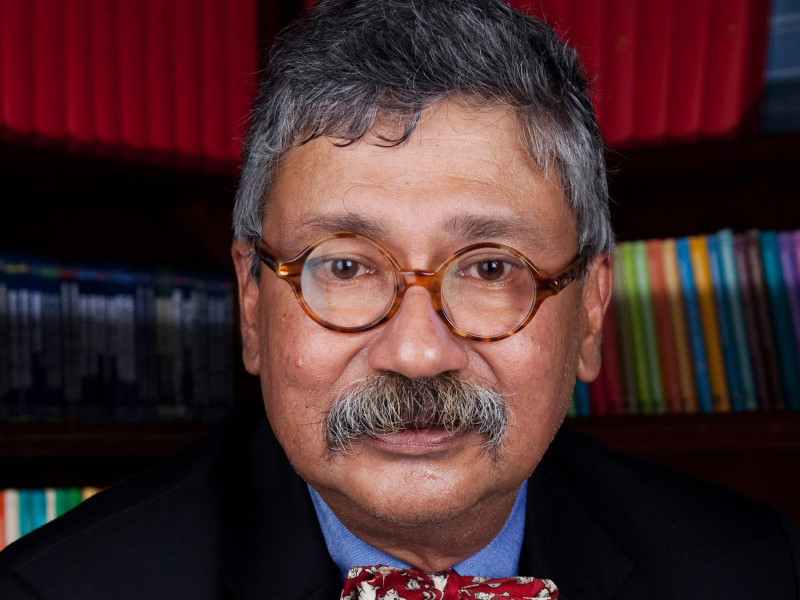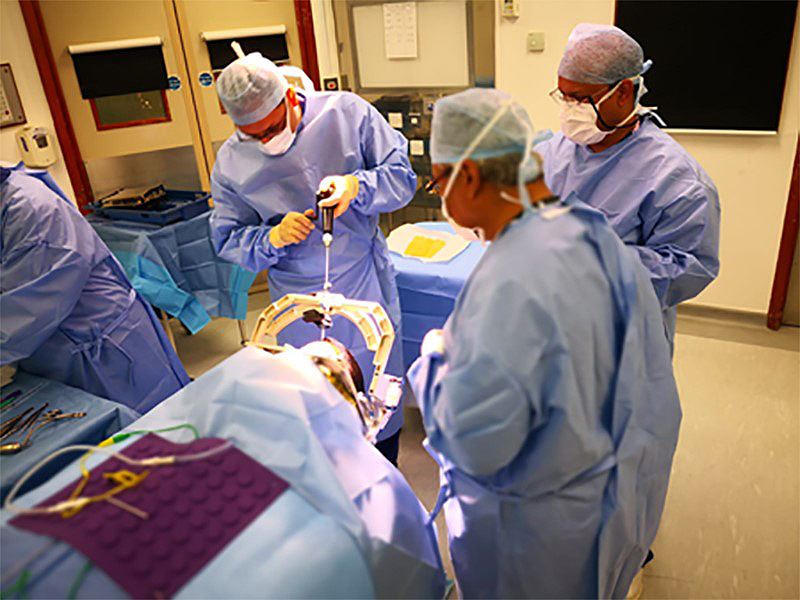The pioneering deep brain lesioning surgery is a first for a UK private hospital and a milestone in our hospital’s commitment to providing patients with access to the latest treatment technologies.

Consultant Neurosurgeons Professor Tipu Aziz and Mr Erlick Pereira performed the deep brain lesion on Thursday 3 June 2021. Targeting a part of the brain called the thalamus, the surgery, called a thalamotomy, would improve the patient’s severe, disabling tremor.
Deep brain lesions are helpful to treat movement disorders such as tremor, Parkinson’s disease and dystonia, and complement deep brain stimulation as a surgical treatment offered by The London Clinic’s Centre for Movement Disorders.
Deep brain lesions also treat pain, in particular cancer pain as part of therapies offered by The London Clinic’s Centre for Neuromodulation.
The patient’s experience
Thomas, a physicist by training, tells of how thalamotomy has profoundly improved his tremor.
“After a rapid and severe illness, a couple of years ago, I developed severe tremor, particularly in my right arm. It was worse if anxious and I could neither pick up a cup to drink nor brush my teeth.
“The condition meant that my brain was constantly generating shaking signals, so even when there was no physical cause, my arm was shaking. My balance was also affected with some tremor elsewhere in my body.
“I saw several neurologists. I considered deep brain stimulation and focused ultrasound surgeries with my neurosurgeon, Professor Aziz. I did not want an implant inside me and I was worried the effect of ultrasound would be only temporary, lasting a few months.
“The ultrasound procedure would also last several hours with my head shaved and a frame fixed to my head whereas the radiofrequency thalamotomy procedure took only half an hour, with no haircut and no pain.
“I was excited to get it done. There wasn’t any preparation involved other than having a few tests, as there would be with any surgical procedure.
“And afterwards, I didn’t even have a headache so there was no need to take the paracetamol prescribed. There was just a slight feeling of pressure but I was very comfortable and the dentist is certainly worse!
“I’m quite amazed. My tremor is now 90% improved just a few days after the procedure and it can take up to six weeks to benefit from the full effect. Right now, I can drink from a cup and eat my food and my mobility is still good.
“In terms of the effect of the lesion, it’s been life-changing. I would absolutely recommend this, because medication is a chronic condition management but this is a promising one-off treatment that should last life-long.”
What is deep brain lesioning?
Professor Tipu Zahed Aziz, Founder and Head of Oxford Functional Neurosurgery, Professor of Neurosurgery at the University of Oxford and Consultant Neurosurgeon at The London Clinic, provides a summary.

“Tremors are an uncontrollable shaking or trembling. Tremor most commonly affects the hands, but can also affect the arms, face, eyes, voice, trunk or legs.
“Tremor can be treated by medicines and even botulinum toxin injections. In those cases where drugs and injections do not give sustained benefit, functional neurosurgery becomes an option.
“The two types of effective surgery for tremor are deep brain stimulation and deep brain lesioning.
“In deep brain stimulation for tremor, electrodes are inserted deep into the brain in areas from the ventral intermediate thalamus to the caudal zona incerta. The electrodes are then connected to a pacemaker implanted in the chest. The whole procedure can be done with the patient asleep for their comfort.
“In deep brain lesioning, a small part of the brain is damaged to disrupt the abnormal tremor causing circuitry. This treatment was first done in the 1950s with various tissue damaging agents from absolute alcohol to liquid nitrogen dripped in.
“The most control is had from a technique called radiofrequency thermocoagulation. In this treatment, a probe is inserted into the brain and an electric current passed down it. High frequency currents relieve the tremor whereas low frequency ones check for side effects.
“After testing with different currents, the tip of the probe can be heated to 80 degrees for a minute to burn the abnormally functioning part of brain, creating a tiny stroke in a controlled fashion. Modern alternatives to radiofrequency thermocoagulation are MRI-guided focused ultrasound and gamma knife radiosurgery.
“However, the disadvantages of both compared to radiofrequency thalamotomy are that the procedure might take several hours, with the patient awake clamped into a head frame with a full head shave, and that the lesion might be less controlled in terms of benefits and side-effects and less permanent.
“At The London Clinic, Mr Pereira, Professor Nandi and I use a minimally invasive, low-profile technique where little hair is shaved, only a two centimetre incision is needed in the scalp and a two millimetre hole gently made in the skull.
“The procedure is done with a stereotactic frame fitted to the head and takes less than an hour. The patient is awake for deep brain lesioning in order for their movements and any side effects to be assessed before the lesion is made, but comfortable throughout and given light sedation if required.
“In Thomas’s case, his bad tremor in one arm and unsteady walk required careful assessment before and during surgery to obtain the good result we achieved.
“So far, things have gone extremely well. The operation went smoothly taking only about 40 minutes (a tenth of the time that ultrasound would) and we have been very pleased with the results. I will continue to be in regular contact with Thomas.”
Deena Shah, Senior Product Manager Radiofrequency at Boston Scientific Neuromodulation EMEA, commented: “We are delighted to have supported Mr Pereira and Professor Aziz for this first radiofrequency thalamotomy in a UK private hospital.
“We hope to continue to work with them and The London Clinic to increase access to and raise awareness of this important and potentially life-changing therapy.”
Mr Erlick Pereira, Lead Neurosurgeon for The London Clinic functional neurosurgery service and Founder of functional neurosurgery at St George’s University Hospital, explained: “With this additional very powerful surgery now in our armamentarium, The London Clinic offers a complete and comprehensive functional neurosurgery service for movement disorders and pain.
“We have 3T MRI, advanced neurologist and psychologist assessments and state-of-the-art equipment. We can do two deep brain stimulation surgeries in a day with each full surgery taking less than three hours, and regularly treat any patients from the UK insured to international self-pay.

“Only a small proportion of patients are suitable for lesions and only a handful of neurosurgeons in the UK are trained to perform them. This makes it all the more important for us to offer this service.
“At The London Clinic we have particular interests in taking on complex cases, second opinions and revision functional neurosurgeries with a depth of expertise for two and even three consultant neurosurgeons to operate together, if necessary.”





